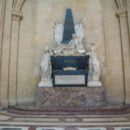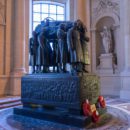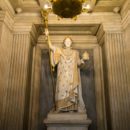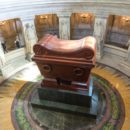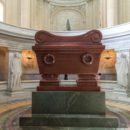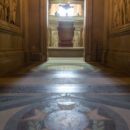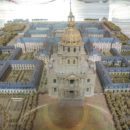Dôme des Invalides / The Tomb of Napoleon was one of the most surprising and impressive places we visited in Paris. This is on the museum pass and part of the Musée de l’Armée. This is definitely a stop worth making. Close to both the Musée Rodin and the Tour Eiffel (Eiffel Tower) this is a good stop to make if either of those are on your list.
This royal chapel was built between 1677 and 1706. The interior decorations produced at that time glorify Louis XIV, the monarchy and his armies.
Known as the Temple de Mars during the Revolution, the Dome Church became a military pantheon during the reign of Napoleon Bonaparte, with the installation of the Turenne tomb (1800) and a funeral monument to Vauban (1807-1808). In 1800, the First Consul ordered the body of Turenne, one of the most famous marshals of France in the Great Century, to be transferred under the Dome, in a monumental tomb. After becoming the Emperor of the French, he repeated this process on 26 May 1808, transferring Vauban’s heart to a mausoleum erected opposite Turenne’s. Built by Trepsat, the initial mausoleum erected in the Chapel of Saint Theresa includes a single column with an urn on top, sitting on a base with trophies on it.
In 1847, as part of the architect Visconti’s works in the crypt designed to receive Napoleon’s tomb, this monument was replaced by a black marble coffin made by the sculptor Antoine Etex. It depicts Vauban semi-recumbent. He holds a compass and meditates on his writings. He is surrounded by the veiled figure of Science and the figure of War, which wears a helmet. On top of the coffin is an obelisk surrounded by flags and standards. An inscription and a bas-relief on the base refer to Vauban’s project for a royal tithe and celebrate the political and reformatory aspect of Vauban’s work.
Nowadays, alongside Napoleon I’s tomb, the Dome contains the graves of his son, l’Aiglon, the King of Rome, his brothers Joseph and Jérôme Bonaparte, the Generals Bertrand and Duroc, and the two famous marshals of the first half of the 20th century, Foch and Lyautey.





